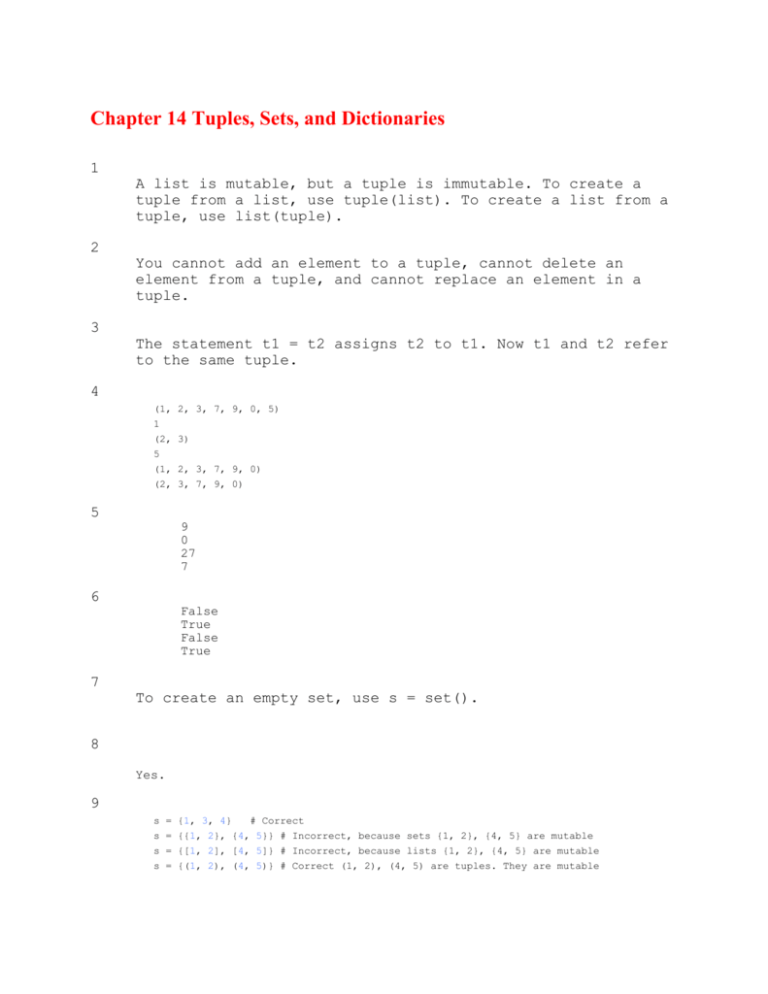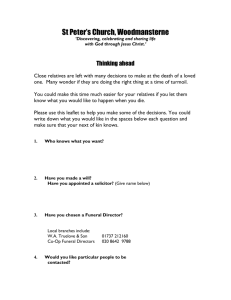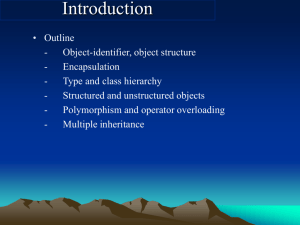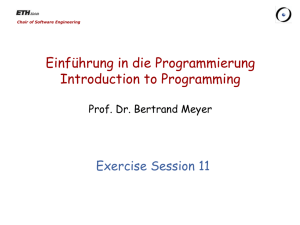Chapter 14 Tuples, Sets, and Dictionaries
advertisement

Chapter 14 Tuples, Sets, and Dictionaries
1
A list is mutable, but a tuple is immutable. To create a
tuple from a list, use tuple(list). To create a list from a
tuple, use list(tuple).
2
You cannot add an element to a tuple, cannot delete an
element from a tuple, and cannot replace an element in a
tuple.
3
The statement t1 = t2 assigns t2 to t1. Now t1 and t2 refer
to the same tuple.
4
(1,
1
(2,
5
(1,
(2,
2, 3, 7, 9, 0, 5)
3)
2, 3, 7, 9, 0)
3, 7, 9, 0)
5
9
0
27
7
6
False
True
False
True
7
To create an empty set, use s = set().
8
Yes.
9
s
s
s
s
=
=
=
=
{1, 3, 4}
# Correct
{{1, 2}, {4, 5}} # Incorrect, because sets {1, 2}, {4, 5} are mutable
{[1, 2], [4, 5]} # Incorrect, because lists {1, 2}, {4, 5} are mutable
{(1, 2), (4, 5)} # Correct (1, 2), (4, 5) are tuples. They are mutable
10
Sets are like lists to store a collection of items. Unlike
lists, the elements in a set are unique and are not placed
in any particular ordered. To create a set from a list, use
set(list). To create a list from a set, use list(set).
11
{'john', 'peter'}
{'john', 'peter'}
{'peterson', 'john', 'peter'}
{'peterson', 'john'}
12
Since "johnson" is not in the set, invoking
remove("Johnson") will throw an exception.
13
True
False
False
False
True
True
14
4
6
1
16
15
{1,
{1,
{1,
{1,
{4,
{4,
{3,
{3,
3,
3,
6}
6}
5}
5}
4,
4,
16.
False
True
4
11
2
23
True
True
17.
4, 5, 6, 7}
4, 5, 6, 7}
5, 7}
5, 7}
{1,
{1,
{1,
{1,
2,
2,
2,
2,
3}
3}
3}
3}
{3,
{3,
{3,
{3,
4,
4,
4,
4,
5}
5}
5}
5}
{1, 2, 3, 4, 5}
{1, 2}
{3}
{1, 2, 4, 5}
18.
d = {} or d = dict()
19.
d = {1:[1, 2], 3:[3, 4]}
#d = {[1, 2]:1, [3, 4]:3}
d = {(1, 2):1, (3, 4):3}
d = {1:"john", 3:"peter"}
d = {"john":1, "peter":3}
# Correct
# Incorrect, key must be immutable
# Correct
# Correct
# Correct
20
They are called key and value.
21
a.
b.
c.
d.
Assign 5 to associate with key "susan"
Assign 5 to associate with key "peter"
Add the value for key "peter" by 5
Del the entry with key "peter"
22
a. print(len(students)) # print 2
b. print(students.keys()) # print keys 'john', 'peter'
c. print(students.values()) # print values 3, 2
d. print(students.items()) # print items ('john', 3),
('peter', 2)
23.
4
['blue', 'green', 'yellow', 'red']
[1, 14, 2, 4]
True
False
11
24.
4
25
The get(key) method is similar to dictionary_name[key] except that the get method returns None
if the key is not in the dictionary rather than raising an exception.











